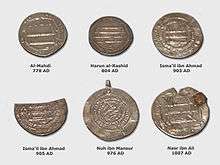Islam in Estonia
Estonia has one of the smallest Muslim communities in Europe. According to the census of 2011, the number of people who profess Islam was 1,508 in Estonia. The number of practicing Muslims is small and, in the absence of a mosque, the Turath Islamic Cultural Center serves as a center of worship..
History
The first Muslims in Estonia were mostly Sunni Tatars and Shia Azeri who had been released from the military service in the Russian Army after Estonia and Livonia had been conquered by the Russian Empire in 1721. The overwhelming majority of Muslims immigrated to Estonia during the Soviet occupation of Estonia between 1940 and 1991.
Since 1860, the Tatar community started showing activity, the centre being in the city of Narva. A Muslim congregation (Narva Muhamedi Kogudus) was registered there under the independent Republic of Estonia in 1928 and a second one (Tallinna Muhamedi Usuühing) in Tallinn in 1939. A house built for funds received as donations was converted into a mosque in Narva. In 1940, the Soviet authorities banned both congregations, and the buildings of the congregations were destroyed during World War II (in 1944).
There are no mosques in Estonia; in Tallinn an apartment is adapted for prayer purposes.[1] The Muslim community in Estonia is politically moderate and, unusually in the global context, the Sunnis and Shias worship jointly.[2]
Gallery
 Islamic Golden Age coins found in Estonia.
Islamic Golden Age coins found in Estonia.
